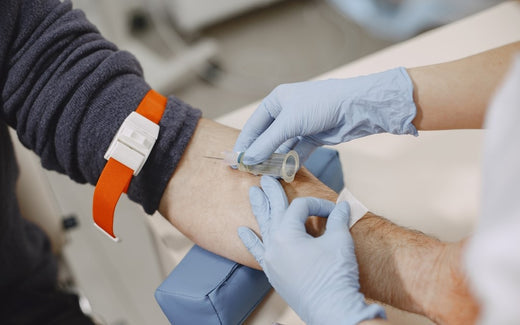The original article was provided by Greiner Vacuette.
Pay More Attention to the Risks
At the forefront of our concerns is the need to inform healthcare sector employees about the significant risks they face when handling and disposing of hypodermic needles. Often, these potential hazards go unnoticed or are not taken seriously, leading to a high number of unreported cases of needlestick injuries.
Healthcare professionals engaged in a variety of tasks are particularly exposed to risks when working with sharp and pointed objects like cannulas. Needlestick injuries pose a serious threat, yet their prevalence remains underestimated.
A Serious Consequence
A needlestick injury is not just a health-related concern; it could potentially end a healthcare career. Understanding the gravity of these injuries is crucial for the safety of both healthcare workers and the patients they care for.
Needlestick Injuries Are Far From Trivial
In Europe, approximately one million needlestick injuries occur annually, while In Australia, at least 18,000 healthcare professionals experience a needlestick injury every year. These injuries constitute a significant portion of workplace accidents in the healthcare sector, emphasizing their critical nature due to the potential transmission of bloodborne pathogens.
Which Pathogens are Most Dangerous?
Viruses transmitted via blood, such as Hepatitis B (HBV), Hepatitis C (HCV), and Human Immunodeficiency Virus (HIV), pose the greatest risks. The risk of infection depends on the prevalence of these viruses and the probability of infection.
Danger for Employees in the Healthcare Sector
Needlestick injuries are an occupational hazard for healthcare workers as they can lead to the transmission of bloodborne infections such as human immunodeficiency virus (HIV), hepatitis B and hepatitis C, with the potential for serious complications.
Other infections that can potentially be transmitted via a needlestick injury include malaria, infectious mononucleosis, diphtheria, herpes, tuberculosis and syphilis.
Which Objects Cause Injuries?
Needlestick injuries with hollow needles (injections, blood samples) are more likely to lead to infections than those with surgical needles. The aftermath of an infection can have profound effects on both the career and personal circumstances of the affected person.
How to Protect Yourself
Use of Safety Products
The use of safety products significantly reduces the risk of needlestick injuries. Various technical improvements fall into categories such as active devices requiring activation of the safety mechanism, passive devices that work automatically throughout usage, and others.
A Lot of Needlestick Injuries Could Be Avoided
Studies indicate that the frequency of needlestick injuries can be significantly reduced with the use of safety products. Applying devices with manually activated safety mechanisms, especially those activated while the needle is still in the vein, enhances safety.
How Can I Protect Myself?
The primary safety risk is the lack of education. It is crucial to take risks and warnings seriously, stay informed about potential protection measures, and use safety products. Frequent checks of protection levels are imperative, and adherence to employer-provided safety guidelines is essential.
Avoid Dangerous Working Procedures
For personal protection, avoid dangerous working procedures, use safety products, and dispose of hazardous objects in suitable containers.


Injured! What to Do?
Post-Injury Measures
In case of injury, follow recommended post-injury measures based on WHO guidelines. Recommendations include letting the wound bleed, thorough disinfection, and protection with a sterile bandage. Specific measures depend on the type of injury, such as a prick, cut, contaminated skin, or mucous membrane.
Accident Report is Important
An accident report is crucial for various reasons, including laboratory tests on the affected person and the source of infection, providing certainty and emotional relief. Employers report the incident to the insurance company, ensuring proper documentation and assistance for the affected employee.
Costs
Material and Immaterial Costs
Material costs associated with needlestick injuries are considerable but can be effectively reduced by using safety products. While safety products might have higher acquisition costs, the reduction in injury-related costs over several years offsets this. Immaterial costs, such as worries and concerns of injured employees and their families, cannot be measured in monetary terms.
Conclusion
In conclusion, understanding and implementing safety measures, including the use of safety products, are crucial steps in making needlestick injuries history in the healthcare sector. These practices not only protect healthcare workers but also contribute to substantial economic savings over time.
VACUETTE® QUICKSHIELD Safety Tube Holders & Accessories offer an enhanced safety feature with a manually activated mechanism. This ensures protection even while the needle is still in the vein, providing a higher level of safety.
FIND GREINER VACUETTE® QUICKSHIELD SAFETY TUBE HOLDERS & ACCESSORIES

